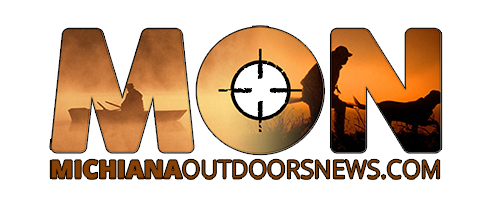- Details
IDNR Report
The Indiana DNR announced that organizations in 12 Indiana counties will receive $1,324,000 in grants to fund 18 lake, river, and watershed land treatment projects through DNR’s Lake and River Enhancement (LARE) program. Funded projects are in LaGrange, Montgomery, Kosciusko, Owen, Marion, Elkhart, Starke, Dekalb, Randolph, Fountain, Jennings, and Gibson counties.
For a list of lakes in northern Indiana to be funded for treatments, click here.
The grants are funded through the LARE fee paid annually by boat owners when they register their craft with the Bureau of Motor Vehicles. This user-funded program benefits boaters all over the state. The grants allow for the completion of projects that would be difficult for local organizations to fund on their own. Grants are awarded on a competitive basis, and local sponsors share at least 20% of the cost.
This round of grant-funded projects will benefit eight lakes and 11 rivers and streams, with some projects benefiting more than one lake. In addition, two land-based projects associated with watershed land treatment practices have been funded in coordination with local Soil and Water Conservation Districts.
Many of the projects aim to improve water quality by reducing sediment and nutrient inputs. Improved water quality helps fish and wildlife populations and improves recreational opportunities.
The projects, listed by body of water, county, project type, and grant award, can be found at lare.dnr.IN.gov.
- Details
IDNR Report
Public access to Hudson Lake has been restored after completion of the dredging of a navigation channel from the boat ramp to the lake. The ramp had been closed since mid-July.
The project, funded by the Indiana Department of Natural Resources (DNR) Lake and River Enhancement (LARE) program and Hudson Lake Conservation Association, hydraulically pumped sediment from the access channel to an upland area on the northwest end of the lake.
For more information on the LARE program and its current projects, please see lare.dnr.IN.gov. Find more information on public access sites at on.IN.gov/adopt-a-ramp.
- Details
IDNR Report
As autumn settles in, fewer anglers on the water means more opportunities for you to reel in big bass. Cooler temperatures and clearer streams make fall an ideal time to fish your favorite local river or stream.
If you head out this season, the DNR would love to hear about your experience. During the past year, biologists have been gathering data on stream black bass, including smallmouth, largemouth, and spotted bass, to better understand fishing pressure and population trends.
Whether you land a trophy catch or come up empty-handed, your trip still provides valuable insights. The survey collects river or stream location, time spent fishing, and the sizes of fish caught.
Your participation helps us protect and enhance Indiana’s bass fisheries for seasons to come. You can find your survey at https://www.in.gov/dnr/fish-and-wildlife/fishing/indiana-fishing-reports/.
- Details
IDNR Report
This spring, the Indiana Department of Natural Resources (DNR) completed its annual stocking of waterways with walleye and saugeye.
These fish are known for being excellent table fare and for the skill it takes to catch them.
Because these fish don’t reproduce naturally in most of Indiana, DNR spawns and stocks them.
Spawning operations from late March to early April, which are organized at Brookville Lake, resulted in 32.2 million fertilized walleye eggs. The eggs yielded 18.9 million walleye fry, 487,304 walleye fingerlings (average 1.4 inches), and 156,725 saugeye fingerlings (average 1.4 inches). Fry were stocked at the end of April, and walleye and saugeye fingerlings were stocked at the end of May.
Additional walleye fingerlings are being grown in state hatcheries for fall stockings.
- Details
IDNR Report
Hunters can now apply for Indiana’s state land reserved hunts online using the Division of Fish & Wildlife Activity Hub at GoOutdoorsIN.com.
Reserved hunts included in this round include Fish & Wildlife Area (FWA) dove, Indiana Private Lands Access (IPLA) hunts, youth deer and National Wildlife Refuge deer hunts.
The online application method is the only way to apply for the hunts listed. No late entries will be accepted. Applicants must possess a hunting license that is valid for the hunt for which they are applying. A $1 tech fee is charged for each hunt application purchased.
Applications must be submitted by 11:59 p.m. ET on Wednesday, July 30. More specific hunt information for individual properties can be found at on.IN.gov/reservedhunt.
An important note about the applying for a hunt:
In December 2024 a new license system, the Activity Hub, replaced the former system. To purchase a license or apply for a reserved hunt, follow the instructions below. We recommend leaving yourself plenty of time to log in and learn how the system works.


